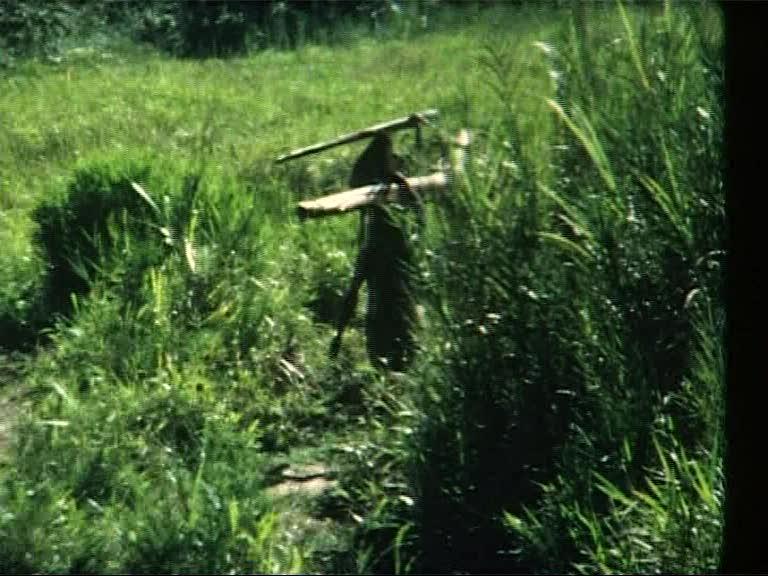

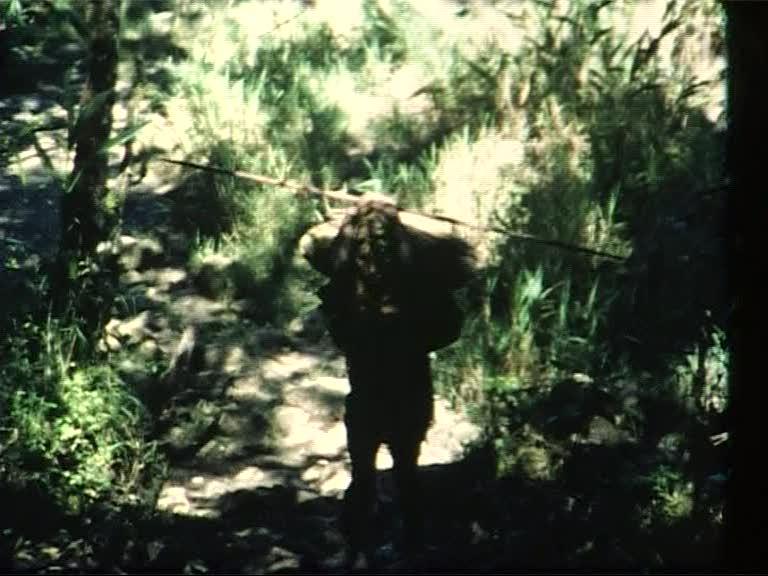

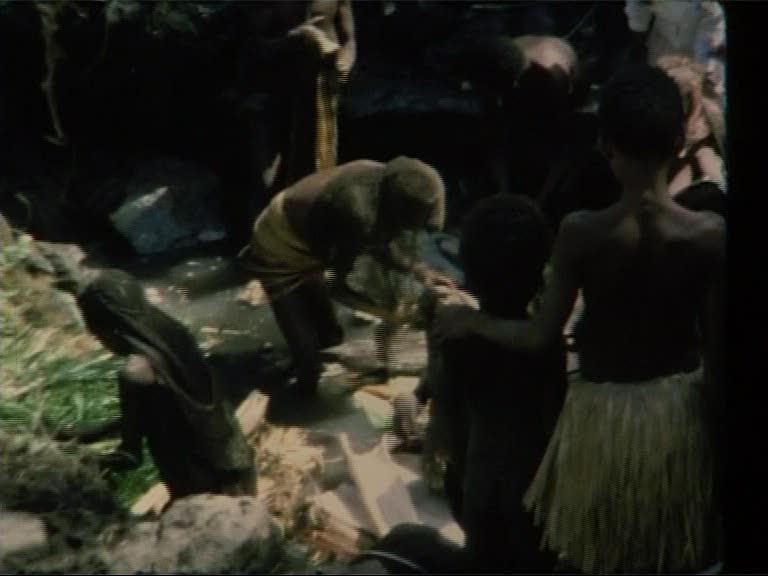

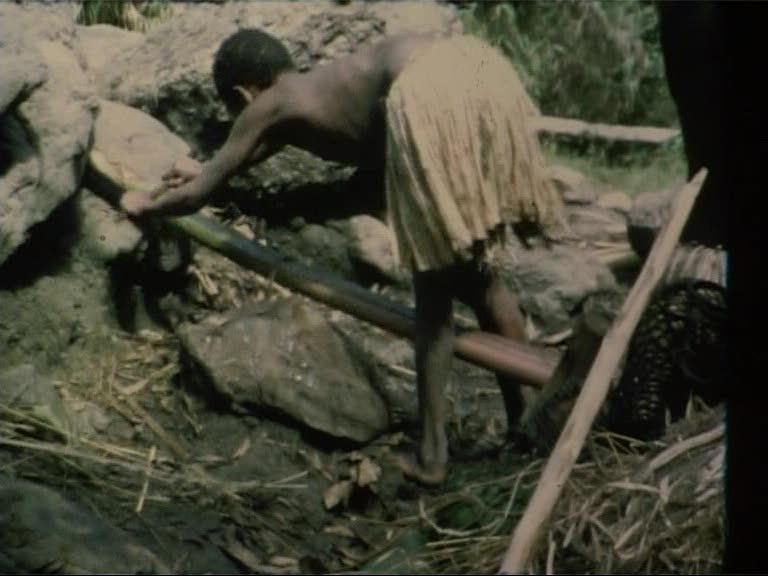



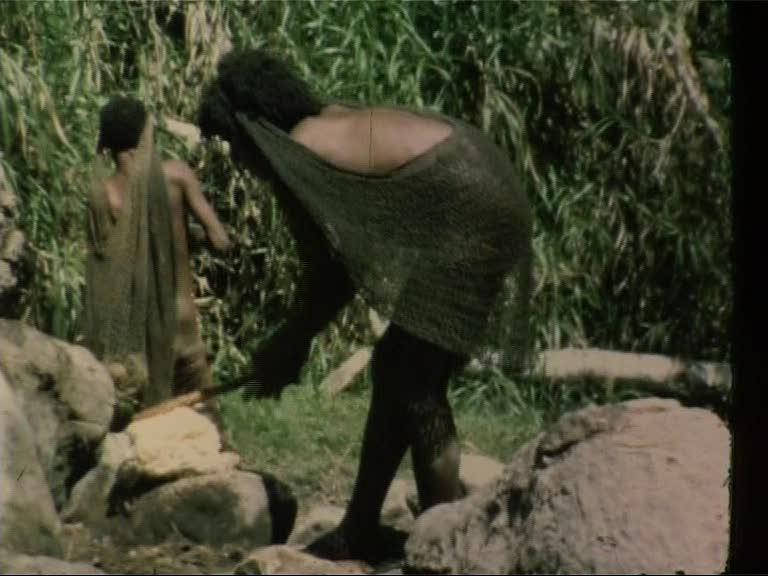



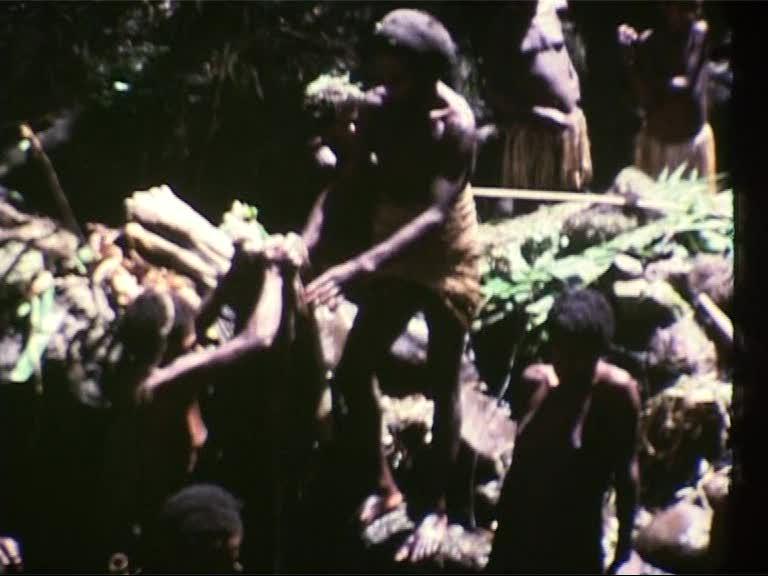

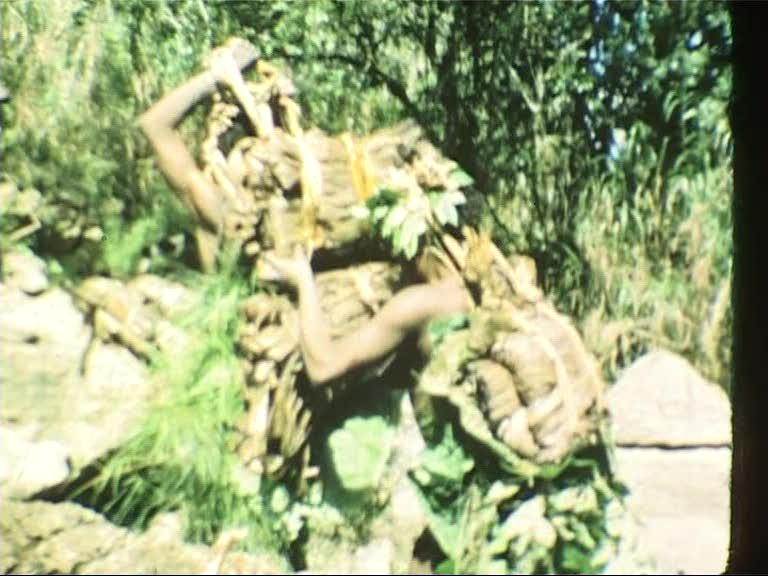



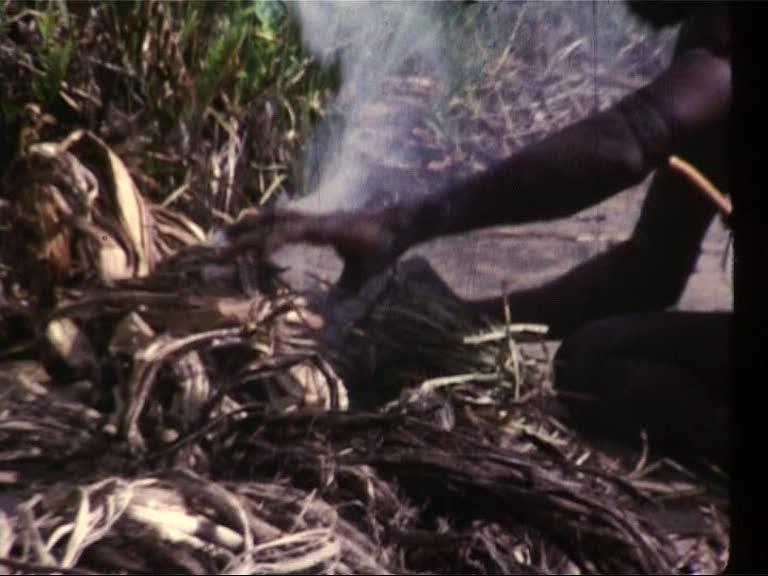



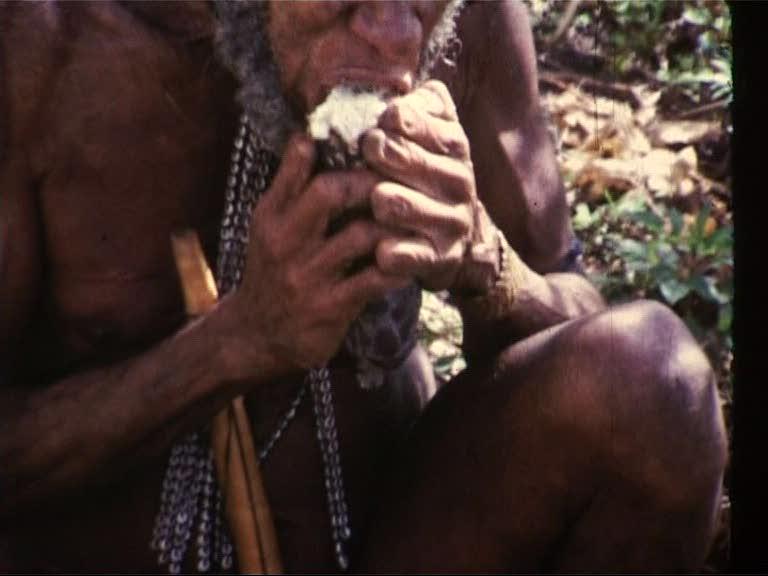



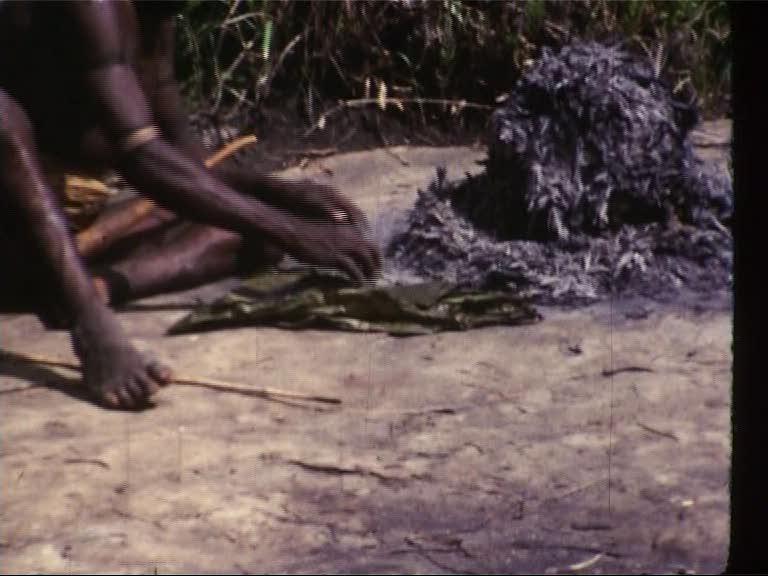

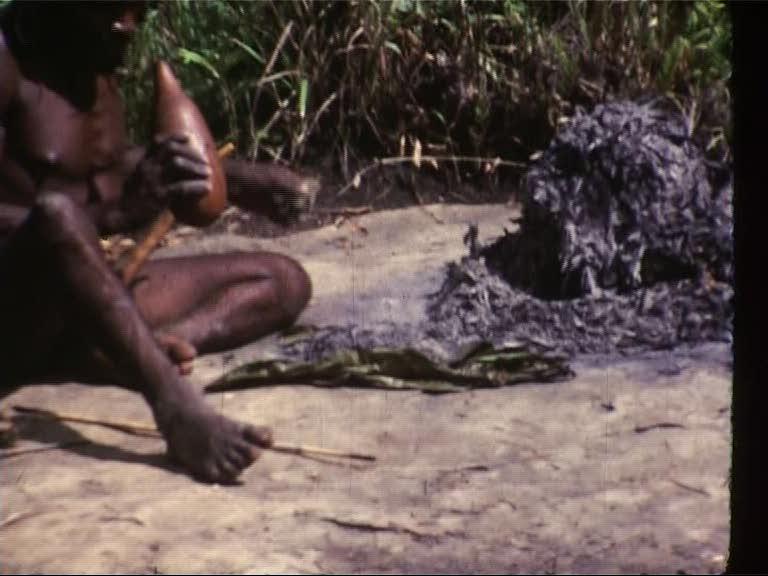

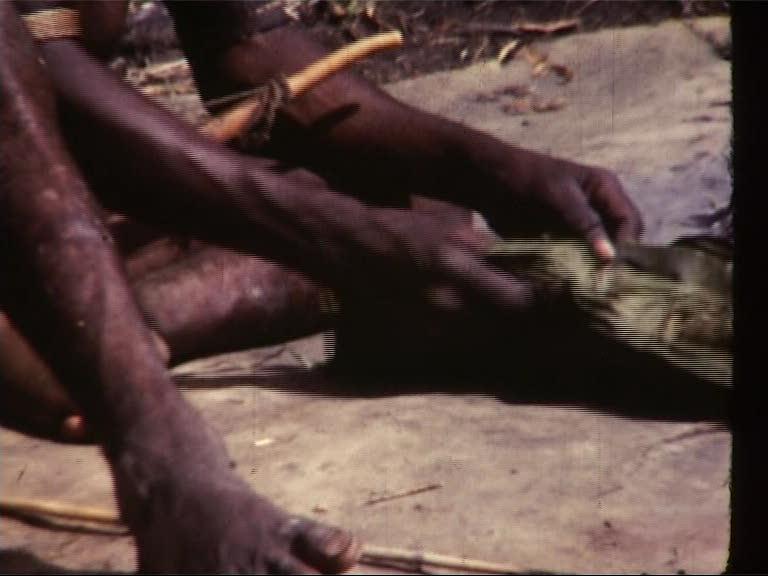

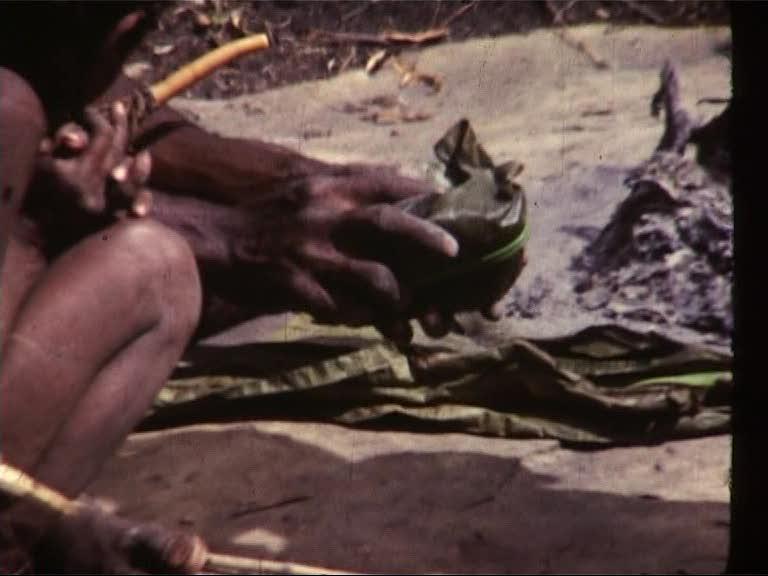

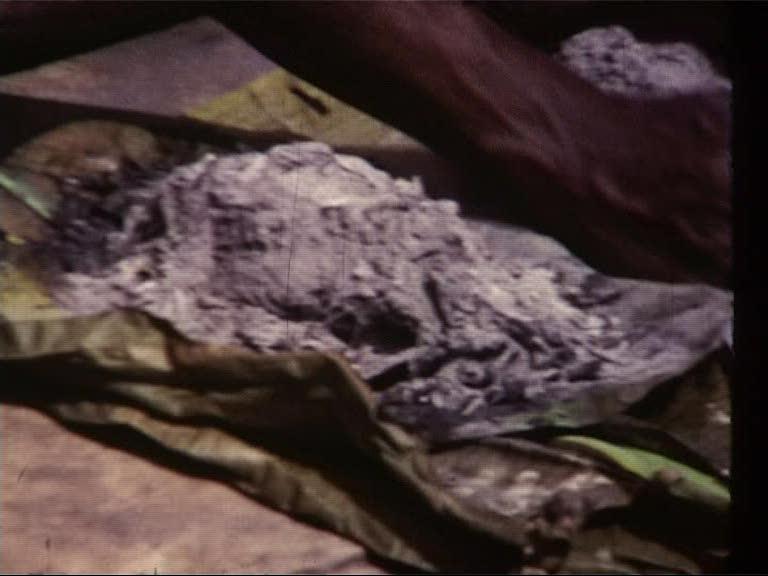

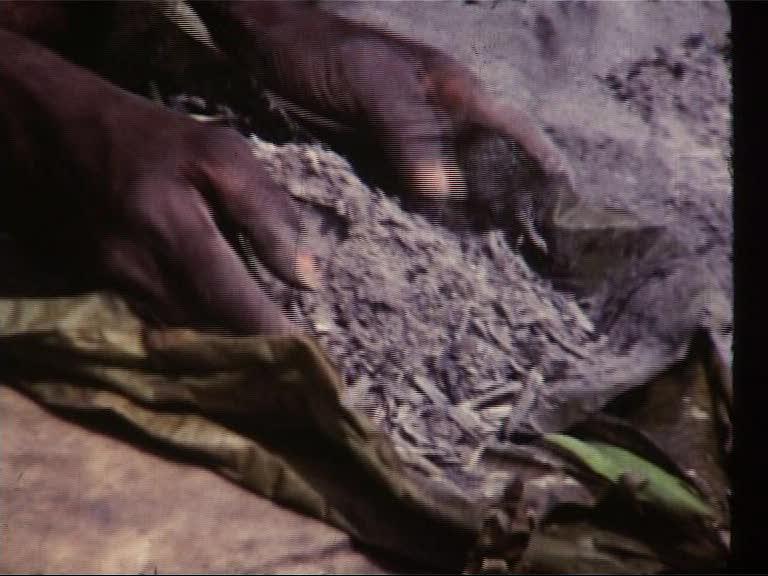



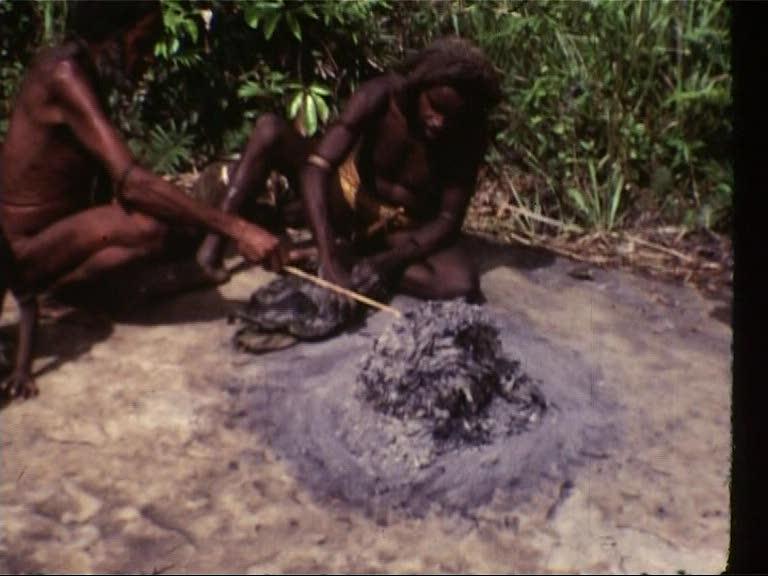

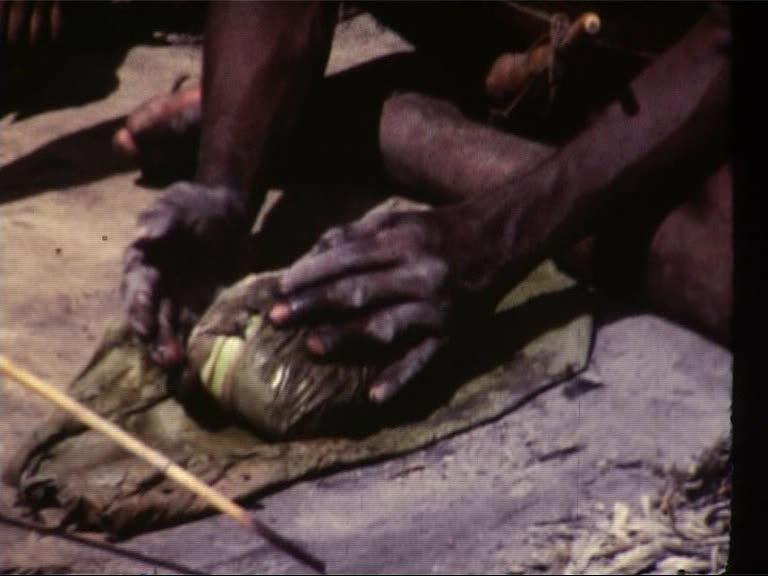



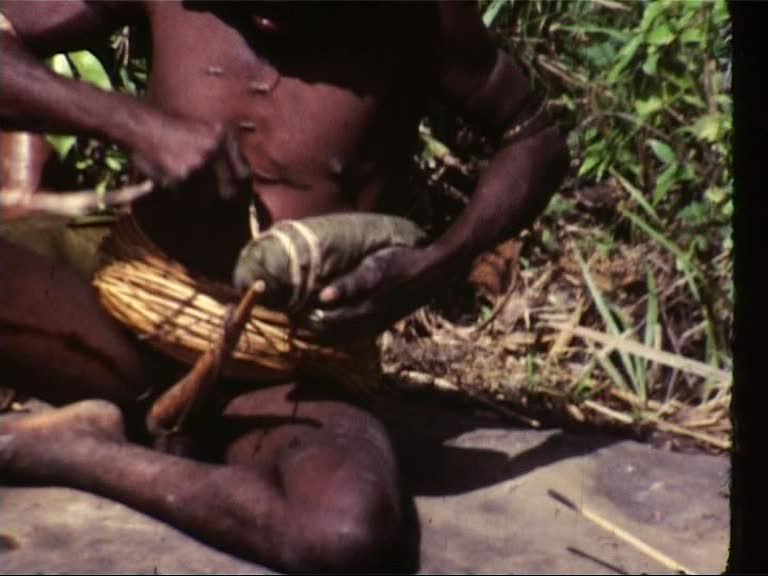

Iluge Wulasuogeluk
Iluge Wulasuogeluk
Objectcode
FI/40/19
Film by father Jules Camps OFM, recorded during the 1970s in the central mountain area of Irian Jaya. 'Iluge wulasuogeluk' or primitive salt mining is roughly divided into 3 parts: the trip to the salt well area, the gathering of salt water, and the processing of the salt into cakes.
Contents
Description: Iluge wulasuogeluk or primitive salt mining is roughly divided into 3 parts: the trip to the well area, the gathering of salt water, and the processing of the salt into cakes. The salt well is located near Yiwika and is known as Iluakaima. Iluakaima represents one of a very few such places in the Baliem Valley. Iluakaima is located about one hour's walk from Yiwika up a mountain path stepped with rocks worn smooth by generations of use. In earlier times the salt well provided the necessary salt to the Baliem people and provided a valuable trade item as well. The value of native salt is declining with the decrease in this trade due to the availability of salt from the missions and stores. The film begins by showing a number of women going to the salt well, using the path from the valley floor. They climb the path referred to as Holak kikha in about 45 minutes to an hour. On their heads the women carry the wangki or banana stem and leaves which will be used to gather salty water. Going to Iluakaima is not uneventful for the way is spotted with places which have significance in the traditional beliefs. These places are known as wusama, which comes from wusa, indicating it has supernatural power and where je are kept, a stone called awili, which women will prevent her from becoming pregnant (can also protect men), phiakne elo or origin hole of the warm wind and helekit wamoat, which is said to be a pig turned to stone in former times. This portion of the film also depicts the usual method for obtaining a drink of water from a cold mountain stream. The second section of the film deals with the usual activity seen at the salt well or pool. First people are seen coming into the well area where others are already working. The well itself, a salt pool of underground source, measures perhaps up to 4 meters in diameter and up to one half meter in depth. Upon arriving at the pool, the women (or men) go about preparing the banana stem for use in gathering the salt water. The outer bark of the wangki is stripped off using a small wooden stick called a pelel. The remainder of the stem is then beaten into a pulp, isiken, which is flatten and used to absorb the salt water. This, along with leaves and other greens such as kilimi, will be soaked in the pool until saturated with the salt brine. These will be chewed on and repeatedly rung by hand until they absorb the maximum amount of water. Throughout the work, salt soaked greens such as iluge eken, will be eaten and salt water consumed. As the people leave the well, it will be noted they carry the salt laden burden of banana stems as well as carry the salt water home in the ijoak. The concluding portion of the film begins in the compound of Kurelu, the local big man, and moves to Sagatnokhoma, a place where the final processing of the salt will take place. Sagatnokhoma is a smooth rocky area not far from Yiwika. The salt laden strands are first dried on the roof of the hunila for 2 or 3 days. Iluge puk or the dry strands are then taken to Sagatnokhoma. The man filmed processing the salt is a Yali man, named Omolok, from a tribe other than Baliem who also utilize the salt source through agreement with Kurelu. The process is the same, however. The first step in the final process is the burning of the stem strands into a fine ash. The complete burning is assured by providing holes (telok hiliago) around the base of the iluge werasin, which permit needed oxygen to the combustion process. This fine ash, iluge al, is then taken in small amounts, to which is added a little water, and kneaded into cakes until all the ash is thus turned into salt cakes, ilugeken. Haki eka or a specially prepared banana leaf is used to wrap the finish product. The cake will eventually dry into a hard block which is flaked as salt is desired. Care is taken that not a single ounce of the precious material is lost. Salt is used on sweet potato leaves and other greens. In former times salt was a valuable trade item because of its limited availability in the Baliem Valley. Today trade salt is rapidly reducing the value of native salt as a trade item. Persons (in order of appearance): 1) Dabuk, 2) Kurelu, 3) Omolok (a Yali man), 4) Assorted men and women unknown. Terminology: 1) wangki: banana stem used for salt gathering 2) wusama: wusa place or sacred place 3) je: wusa stone 4) awili: touch stone for women on way to well 5) helekit wamoat: place where a pig was killed and became a stone 6) phiakne elo: origin hole of warm wind 7) pelel: wood stick used to dibark banana stem and pound it to strands which are later paddled into flat strips (= isiken) 8) kilimi: leaves used to gather salt water 9) ijoak: water gourds 10) iluge puk: strands of leaves and dried bark 11) hunila: cook house 12) jaga: stone adze - acculturated 13) Sagatnokhoma: place for making salt blocks, also village place name. 14) iluge werasin: firing of brine soaked strands 15) telok hiliago: he is making holes for oxygen 16) iluge eken: salt cakes 17) helo wasin: binding of the salt cakes 18) haki eka: leaf wrap for salt This description was prepared by Larry N. Naylor, Southern Illinois University, in collaboration with J.A.E. Camps ofm, and using local informants. The chief informants for this film were: Kirilmo, Uwo and Hanoma.
Title
Camps 4
Year
1972
Technical detail
Dating
01-02-1972 - 31-05-1972
Color
Silent
Thesaurus terms
Cultural
Cultural origin » Papua » Central Highlands » Centrale Highlands » Baliem Valley
Geographic
Geographical term » Papua » Division Hollandia » Explorationressort Eastern Highlands » Baliem
References
Bibliographic reference
Le Roux, 1954. De bergpapua's van Nieuw-Guinea en hun woongebied, deel II, pag. 242 e.v.